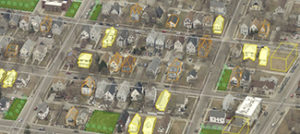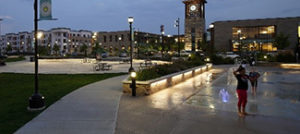Must We Solve All Three Problems at the Same Time?
As planners we often start small and then “scale up.” We can, however, still integrate goals and actions.
- Major floods damage harbors, ports, and neighborhoods – without addressing environmental and economic factors concurrently, neither can be solved in the long term.
- Lack of good transit creates an economic problem for employers and a social equity problem for lower income employees – a solution that focuses on just one side of this issue will fail over time.
- Public health problems (like pandemics, addiction, and violence) are produced by complex economic, environmental and social conditions – attempts to simplify and isolate the roots of these issues often underestimate or misunderstand their interwoven complexities.
So, what can planners do?
As we implement plans, we must constantly check on each bottom line: economic vitality, environmental protection and social equity. We must, at least, make clients fully aware of the need for interconnected problem solving. Here are some examples:



Bottom-Up Planning for Bottom-Line Change
Planners at GRAEF use a robust set of pragmatic tools to reframe and solve these seemingly intractable problems. We identify incremental actions, use the resources available, and take small steps forward. These small steps lead to vantage points where communities can discover new options. Each small solution redefines the problem and changes the next small step. Here are some examples GRAEF planners have implemented in southeastern Wisconsin:
Bottom Line Action: Economic Vitality
Economic development, job creation, tax structure, and business improvement all lead to public debate. At GRAEF we navigate the obstacles, both real and imagined, with both government agencies and private developers. We see our region not only from the 30,000-foot level, but also on the ground – acre by acre, job by job, business by business. Economic success varies for each public or private and investor – there is no one-size-fits all. GRAEF has helped implement compact community design, waterfronts that increase property value, and programs to create family supporting jobs. Each project is developed in a way to balance economic success with positive impacts on the environment and social equity.
Bottom Line Action: Environmental Protection
There is growing recognition of the need to limit actions that harm freshwater supplies. Environmental protection is a constant struggle with multiple viewpoints, but it is no longer a back-burner issue. GRAEF works every day on projects to improve water quality and to preserve other natural resources. Our solutions fit differently within each community: in some places we have taken steps to preserve agricultural businesses; in some places we have improved community awareness of significant environmental issues; and, in others, we have implemented designs for major environmental improvements complete with scorecards for monitoring triple-bottom-line progress. Again, each of these environmentally oriented projects also advances economic goals and social needs for their communities.
Bottom Line Action: Social Equity
Achieving social equity may be the most critical “bottom line,” yet it is perhaps also the most intractable problem with few pragmatic answers in sight. Here again, as planners, we approach this issue with small, incremental steps tailored to each place that can lead to bigger and widespread solutions in the future. In some communities we have improved diversity by creating new public places that are inclusive of multiple people and groups. In other places, we propose major shifts in housing policies and job access to improve connectivity and inclusivity. Internally, GRAEF just moved its headquarters to downtown Milwaukee for many reasons, not the least of which was to place ourselves in an area where social diversity and economic transformation is more than a slogan.
Steering the region towards resilience
GRAEF planners view real change as proceeding from actions at the bottom that percolate up to the top. We work in large cities, suburbs, and rural areas – all of which require different answers. Maintaining a sustainable triple-bottom-line is an achievable goal, but the solutions will never be simple, never be one-size-fits-all, and never occur without full community engagement from multiple disciplines, diverse groups, and combined resources.
Please let us know your thoughts and if you would like to continue the conversation. You can reach us at planning.urbandesign@graef-usa.com



